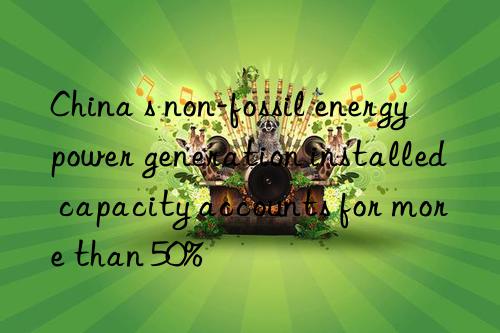
Yang Yinkai, deputy director of the National Development and Reform Commission, said in Shanghai during the first Shanghai International Carbon Neutral Technology, Products and Achievements Expo that the current installed capacity of non-fossil energy in China has reached 50.9%, surpassing fossil energy in history Power generation installed capacity.
Yang Yinkai said at the opening ceremony of the expo held on the 11th that in the past three years, China's "dual carbon" work has made a good start. By strengthening policy design, China has formulated a "dual carbon" implementation plan and support measures for key areas and key industries, and built a "1+N" policy guarantee system for carbon peak carbon neutrality. Accelerate the pace of energy transformation, plan and build large-scale photovoltaic wind power bases in deserts, Gobi and desert areas, and complete energy-saving and carbon-reducing transformation, flexibility transformation and heating transformation of coal power units exceeding 480 million kilowatts.
With the support of a series of policies, China's green and low-carbon innovation is full of vitality, the green and low-carbon industry is full of vigor, and the potential for green and low-carbon development is unlimited. Yang Yinkai said that in the next step, the National Development and Reform Commission will jointly promote carbon reduction, pollution reduction, green expansion, and growth, and will focus on four aspects of work in the near future.
The first is to accelerate the energy revolution, adhere to the principle of "building first and destroying later", and promote the replacement of old and new energy in an orderly manner; the second is to accelerate the low-carbon transformation of key areas, promote the deep integration of emerging technologies and green The energy consumption and carbon emission of the project are related, guide the transformation and upgrading of traditional industries, the replacement of product equipment, and promote energy conservation and carbon reduction in key areas such as urban and rural construction, transportation, etc. The whole chain supports green technology innovation and cultivates new green kinetic energy for economic growth; the fourth is to accelerate the improvement of green and low-carbon policies, improve fiscal and taxation, finance, investment, and price policies that support green development, and promote dual control of energy consumption to gradually shift to carbon emission prevention and control.



 微信扫一扫打赏
微信扫一扫打赏
